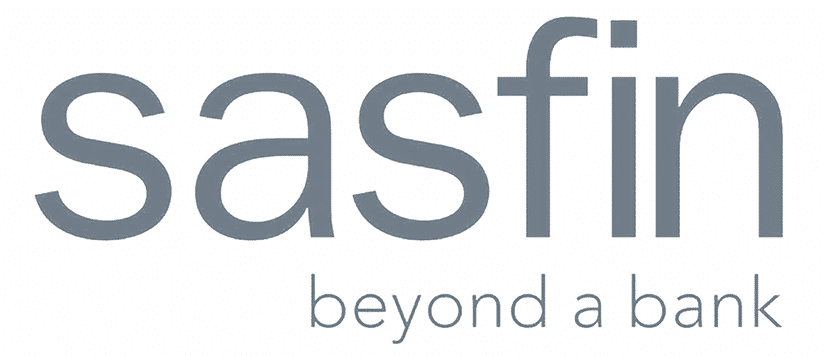In today’s business world, the time to decide can often be the difference between winning or losing a deal and leading the market. As data continues exploding throughout organisations, processing and interpreting information and responding to it quickly is not nice to have; it’s necessary. Artificial intelligence knowledge has become the catalyst that drives faster and smarter decisions.
By knowing how AI systems analyse data, derive insights, and even prescribe decisions, business leaders and data professionals can enable faster decision cycles, minimise risk, and amplify competitive edge. But learning about AI isn’t just a matter of installing a tool; it’s about reimagining how decisions are reached, who gets to take part and how insights flow.
AI Knowledge as a Strategic Decision Accelerator
AI understanding revolutionises decision-making by unlocking insights otherwise derived over days or weeks of manual effort. When professionals know how AI algorithms operate, like predictive analytics, pattern recognition and anomaly detection, they can make sense of outputs and take swift action. AI systems are particularly good at processing vast amounts of both structured and unstructured data in real time, identifying patterns or risks that resonate more than items overlooked by human analysis.
For example, Artificial intelligence-based business intelligence dashboards can signal early signs of customer churn, predict supply chain delays or recommend the best resource allocation, long before problems become real headaches. Thanks to this AI understanding, decision‑makers shift from reacting to the past and acting on its lessons to shaping informed, advanced responses. And instead of waiting for complete reports, they act on recommendations in near-real time.
It’s also because in the age of Artificial Intelligence, knowing means teams can ask better questions. “What does the model suggest? “What inputs were used?” “What assumptions were baked in?” That deepens decision quality and shortens the time between seeing what to do and doing it.
In the final analysis, AI knowledge doesn’t substitute for human judgment; instead, it amplifies human judgment. By blending data-driven suggestions with human context and expertise, organisations make faster and more accurate decisions.
Embedding AI Insight into Decision Workflows
Artificial intelligence tools alone do not suffice; intelligence must be integrated into decision workflows to achieve pace and quality. First, decision processes must be mapped: where decisions occur, how data and information flow, who is involved and what a reasonable time frame might be. And then integrate AI systems at specific junctures: data ingestion, pattern detection, scenario simulation, and decision recommendation. It underscores the finding that companies may need to restructure how work is done to tap into Artificial Intelligence fully.
For instance, a finance team might integrate an AI-based anomaly detection engine into its month-end close to detect questionable activity. Rather than leave normalising to a manual reconciliation process, the Artificial intelligence signals when a field contains an unusual entry as soon as it is entered, allowing for prompt action. What matters is that the experts who have learned about AI know what to do when they see these red flags and when to escalate. They understand confidence, limits and data dependencies in the model. They also know when human control is needed.
By embedding Artificial intelligence insight into workflows, the approvals are streamlined, delays are minimised, and decision support is widely distributed. When every stakeholder knows the underlying logic of AI and what it outputs, decisions might not require weekly meetings; they may be real-time, daily or even hourly. The result is faster, more enlightened decisions powered by AI understanding and human collaboration.
Trust, Risk and The Responsible Use of AI Knowledge
Fast is no good if decisions are bad. This means that, as knowledge workers increasingly take advantage of such Artificial Intelligence technologies, they need to know how to manage the associated risks and governance issues. They are robust AI systems, but can mirror bias, misuse or flawed data. When it comes to AI, a leader with some knowledge knows that if you blindly trust an algorithm, the results won’t be good for you.
They query: “What went into the model? What are its assumptions? What would it take for it to fail?” Responsible Artificial intelligence governance is about transparent, ethical checks, verifiability and human-in-the-loop mechanisms. IBM, for example, if AI is deployed in healthcare or finance without supervision, it could break the law or make damaging decisions. The threat of AI knowledge is notorious for preparing decision‑makers to set guardrails and for models to understand their performance, but it also serves as a reinforcing loop.
Acknowledging the limitations of Artificial intelligence can facilitate quicker decision-making without compromising rigour. Decision makers who do not know which specific external sources are used by the AI system might either over-trust it (i.e. suffer from automation bias) or under-utilise this source of speed advantage. The understanding is crucial as AI knowledge becomes a strategic asset when fast decisions, high quality, and low risk are necessary.
Building an AI‑Knowledge-Driven Culture for Agility
The unlocking of Artificial Intelligence knowledge in making faster decisions requires not only tools but also culture. A culture that embraces experimentation, data literacy and constant learning helps teams embrace AI faster. This begins by upskilling employees: teaching them AI basics, decision logic, how to read model outputs and what questions you need to ask.
As reported in research, “AI interaction skill, thinking through and scrutinising AI and evaluating insights generated by the algorithms, is an important competence in today’s labour market.” Foster Business Magazine Companies can instil such a culture by establishing decision forums to share and have AI-amplified insights reviewed, questioned, and promptly acted upon.
Leaders sponsor rapid decision-making by dismantling hierarchies, granting access to AI tools and taking bold moves. Feedback loops are critical: Decisions that a program makes become grist for future AI models, making the system faster and more accurate as it processes more data.
Focusing on Artificial intelligence knowledge in this way gives companies the confidence that teams can use decision‑support tools effectively and reactively. The upshot is that decision-making becomes constant, nimble and data-informed rather than periodic and bottlenecked. And when the entire company is speaking AI insight and decision logic, speed and impact come naturally.
Conclusion
In a world of rapidly moving decisions and the explosion of data, AI literacy is the fastest way to unlock more rapid, more intelligent decision-making. Artificial intelligence systems can analyse large data sets, recognise patterns, simulate scenarios, and even produce actionable recommendations. However, without human discernment on how to interpret and incorporate those insights into behaviour, fast doesn’t equal value. But professionals and leaders who invest in learning about AI —not just what it can do, but also how, when, and why to apply it —gain an incredible advantage.
They shift decisions from reactive to proactive, design workflows that bring Artificial Intelligence into the business securely and manage risk with responsible governance. They create cultures that enable AI-driven insights to inform decisions in an agile and confident manner. It’s not about replacing human judgment; it’s about enhancing it, speeding it up and lifting it. When people and organisations have built up AI knowledge as a core skill, it transforms decision-making from an occasionally daunting task into a continuous strategic weapon.
GET IN TOUCH WITH THE DIGITAL SCHOOL OF MARKETING
Do you want to become a digital marketing expert with the Digital School of Marketing? If you do, you must do our Digital Marketing Course. Follow this link to find out more.
Frequently Asked Questions
Artificial intelligence literacy enables practitioners to gain an understanding of how to interpret machine-provided insights, which leads to better decision-making in terms of accuracy and speed. Understanding AI models, what data they use, and how to apply them allows people to go from analysis to action rapidly. It eliminates hesitation and congestion so that you can trust the outputs of the policy and find the opportunity to decide faster.
AI accelerates decision-making by analysing enormous amounts of data in real time, recognising patterns, predicting outcomes and suggesting next steps. When embedded in workflows, artificial intelligence tools send alerts and forecasts to professionals more quickly than could be delivered via manual review. This means less time on information gathering or waiting for reports. The results are instant, and teams know what to do– accelerating decision making, reducing risk and acting faster than the competition to get ahead. AI doesn’t just automate, it accelerates.
AI-literacy helps users recognise the limitations of machine intelligence. On their end, it’s learning how to challenge model outputs, check the underlying assumptions and monitor data inputs that will keep humans from handing over too much control to AI. It guarantees decisions that are not just fast, but safe and ethical. When experts know that there are risks of bias or errors in data related to AI, they can build those safeguards into the process. So, it’s a trade-off between speed and responsibility, ensuring no bad or high-risk decisions are taken.
IBM Watson, Google Cloud AI, Tableau with AI integrations, Microsoft Power BI, and Salesforce Einstein are some of the portals that facilitate decision-making powered by artificial intelligence. These are data, insights and predictive analytics engines for business use cases. Professionals can quickly get decision-ready information by learning how to use these tools and interpret their results.
Absolutely. You don’t need to be a data scientist to benefit from knowledge of artificial intelligence. A lot of A.I. utilities are built for business users, and understanding how they work helps you use them effectively. Nontechnical professionals can be taught how to read dashboards, challenge outputs, and find where AI sits in their workflows. This enables them to respond quickly, intelligently and without relying on tech teams. AI is a mainstream capability for jobs in all industries.
This culture is at the core of companies that prioritise AI literacy, encourage experimentation and embed AI tools within everyday workflows. Conversely, teaching teams the basics of AI enables them to understand and interpret insights and collaborate more meaningfully with data experts. Leadership is crucial in both modelling responsible AI applications and in reducing bottlenecks to decision-making.
Blog Categories
You might also like
- Your Complete Guide to PPC Marketing Basics. Find out more.
- Would you make a great marketing manager?
- Will digital marketing now replace traditional marketing?
- Will Digital Marketing Kill Traditional Marketing?
- Why Your Online Branding Is Key To Your Business
- Why Your Mobile Marketing Has To Go Global? Learn more.





















